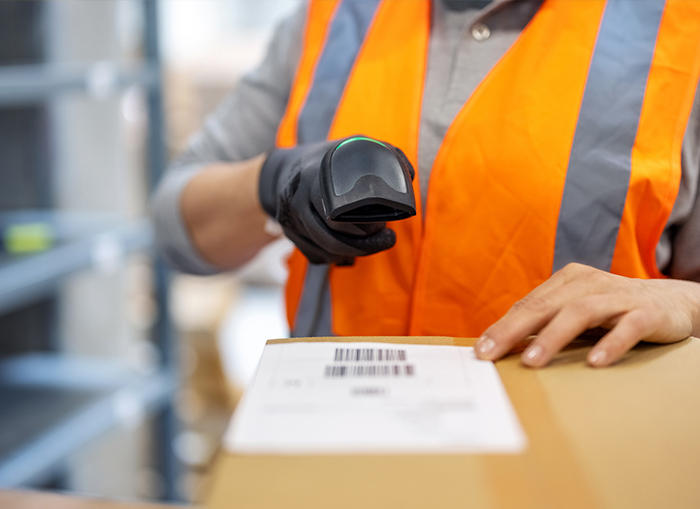Outbound logistics focuses on storing and moving finished inventory out of the supply chain and into the hands of the customers or end users. This process includes order fulfillment, packing, shipping, delivery and handling returns. Here, we’ll explore how the outbound logistics function works within the supply chain and provide valuable insight to help you and your organization optimize its performance.
According to the ACSM Supply Chain Dictionary, outbound logistics is defined as every process that is involved in the shipping and holding of products after they are completed until they are received by the customer. Because of the many steps involved, this can be a very complex process, and it needs to be measured and monitored consistently to ensure an error-free delivery of high-quality products.

Outbound logistics is crucial to an organization’s supply chain success because each of its steps has the potential to directly affect customer satisfaction –– either negatively or positively. Efficient implementation of outbound logistics ensures products are delivered on time and in perfect condition which directly affects the customer’s perception of your brand, your brand’s reputation and the company’s overall revenue potential.
Additionally, utilizing advanced software analytics and forecasting can help you streamline your outbound logistics process by reducing any excess inventory and associated holding costs and optimizing production schedules. This will boost operational effectiveness and help you achieve your business growth goals.

There are several components of outbound logistics, each contributing to the ultimate goal of successfully delivering products into the hands of the end user:
Securely storing materials and products in optimal conditions to keep them safe and efficiently organized.
Utilizing inventory management software to track and maintain inventory accuracy and streamline and expedite order fulfillment, order picking and packing.
Efficiently moving and delivering finished goods from the manufacturer or warehouse to the end user or customer.
Delivering the order to the final destination, usually a single address. This is the costliest part of the journey because each delivery requires individual handling.
Providing and applying the proper packaging to ensure products are protected during transit. This includes labeling, complying with product safety regulations and providing any information needed for the delivery process.
Overseeing the processes and activities required to move finished products from the manufacturer or warehouse to the final destination, including inventory management, warehousing, order fulfillment, transportation and coordination of delivery schedules.
Maintaining optimal customer service and satisfaction requires a careful monitoring of each component of the outbound logistics process to ensure timely deliveries, accurate order fulfillment and optimum product quality.
The process of receiving and returning the products from end users back through the supply chain to either the retailer or manufacturer for recycling, refurbishing, repair or resale.
When executed successfully, outbound logistics can significantly improve customer satisfaction, which in turn boosts your brand’s image and can result in increased revenue. Here are some of the specific benefits of well-run outbound logistics:

Outbound logistics is a complex process with many interdependent steps. Coordinating each step in a seamless, efficient manner that results in on-time delivery and customer satisfaction has many challenges, which include:
Challenge: Coordinating the movement of goods is no small task. If production levels are not adequately monitored, you could find yourself with too much product and nowhere to store it –– or a high consumer demand and not enough product to meet fulfillment.
Solution: Utilizing software and automation can help your team track of shifts in inventory and demand to ensure optimal storage capacity and product for successful fulfillment.
Challenge: The Seven Rs were coined by John J. Coyle, professor emeritus of logistics and supply chain management at Penn State University. They stand for getting the right product, to the right customer, in the right quantity, in the right condition, at the right place, the right time and at the right cost. Achieving all seven requires an extremely disciplined approach to outbound logistics.
Solution: Implementing an integrated management process that uses data to assess performance, identify areas of weakness and track and foster continuous improvements will give you the detailed, up-to-date information you need to hit these targets each and every time.
Challenge: If you’re unable to match your inventory levels to customer demand consistently, you could end up paying expensive holding costs to store overage.
Solution: Closely monitoring inventory planning metrics will help you avoid inventory costs by giving you the data you need to align supply with demand. Some important metrics to monitor include sell-through rate, inventory turnover, order cycle time, days on hand and inventory sales ratio, to name a few.
Challenge: Transportation is a major cost for outbound logistics and can be exacerbated by factors outside of your control, such as weather, traffic, fuel prices and regulatory restrictions.
Solution: Investing in fuel-efficient green vehicles and using software to optimize vehicle loads, routes and communications can help you prepare for the unexpected and improve delivery success. You may also consider using a scalable 3PL provider during peak times.
Challenge: Consumer expectations for free, fast delivery continue to grow, as same-day and even two-hour delivery are becoming the norm. Anything less can leave you with dissatisfied customers and bad reviews.
Solution: Giving your customers real-time visibility into the status of their orders allows them to track deliveries on a virtual map for peace of mind. Consider your delivery service as a competitive differentiator and prioritize it as a direct correlation to customer satisfaction.
Closely monitoring outbound logistics is crucial for ensuring the overall operational effectiveness of your supply chain. By measuring and tracking performance data and analytics, you will be able to identify any inefficiencies, reduce delivery times, and improve customer service, which ultimately results in boosting your brand’s reputation and increasing revenue. Here are a few of the metrics you can track to measure outbound logistics success:

The difference between outbound and inbound logistics is best described by looking at where in the supply chain they occur. Outbound logistics takes place at the end or the second half of the supply chain: storing the finished products and moving them through the fulfillment process to the end user. This includes order processing, packaging, shipping, delivery, and return/reverse logistics.
Inbound logistics covers the start of the supply chain, or the first half: getting the raw materials to the warehouse or manufacturer. This phase of activity includes sourcing, purchasing, receiving, transporting, and warehousing of materials and products.
Both inbound and outbound logistics work together to ensure operational efficiency, product quality, and timely delivery with the ultimate goal of optimal customer satisfaction.
The following links provide more in-depth information on other supply chain topics:
Subscribe today and you’ll receive valuable supply chain insights from the top leaders in the industry that will help you do your job better, faster, and more efficiently. From industry news to insider tips and trends, Signals delivers a quick read on the latest information on supply chain management right to your inbox.
